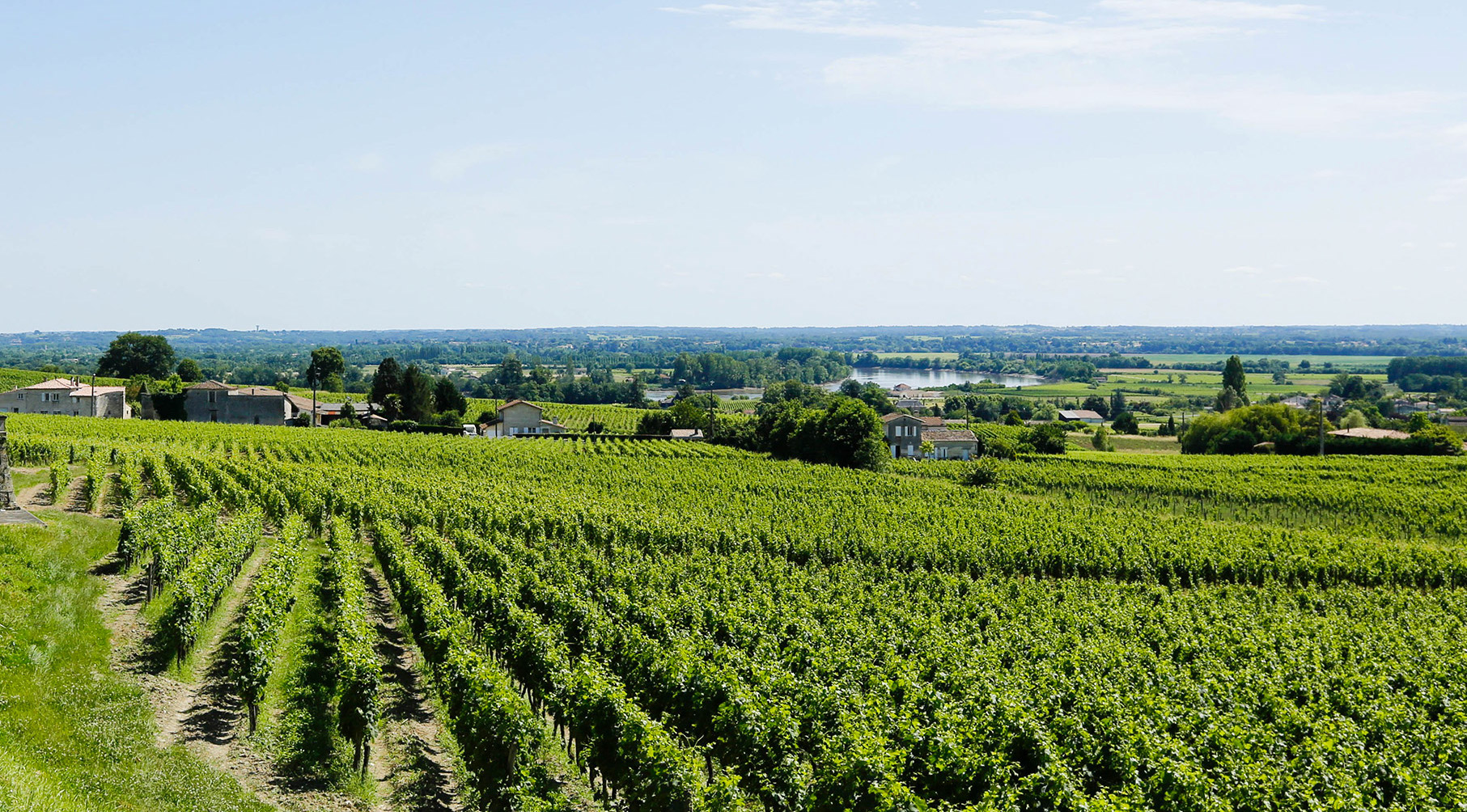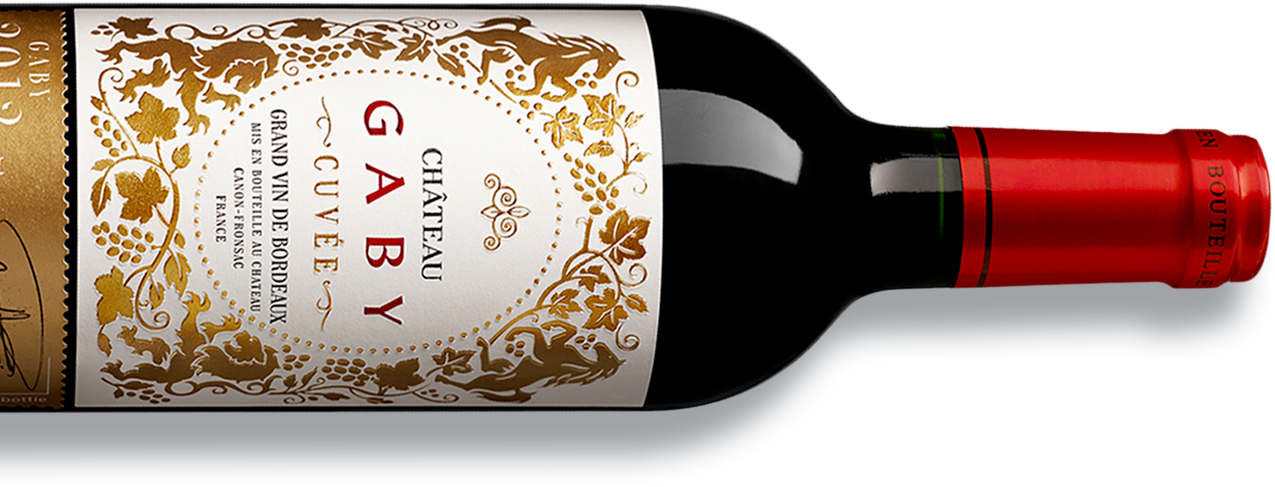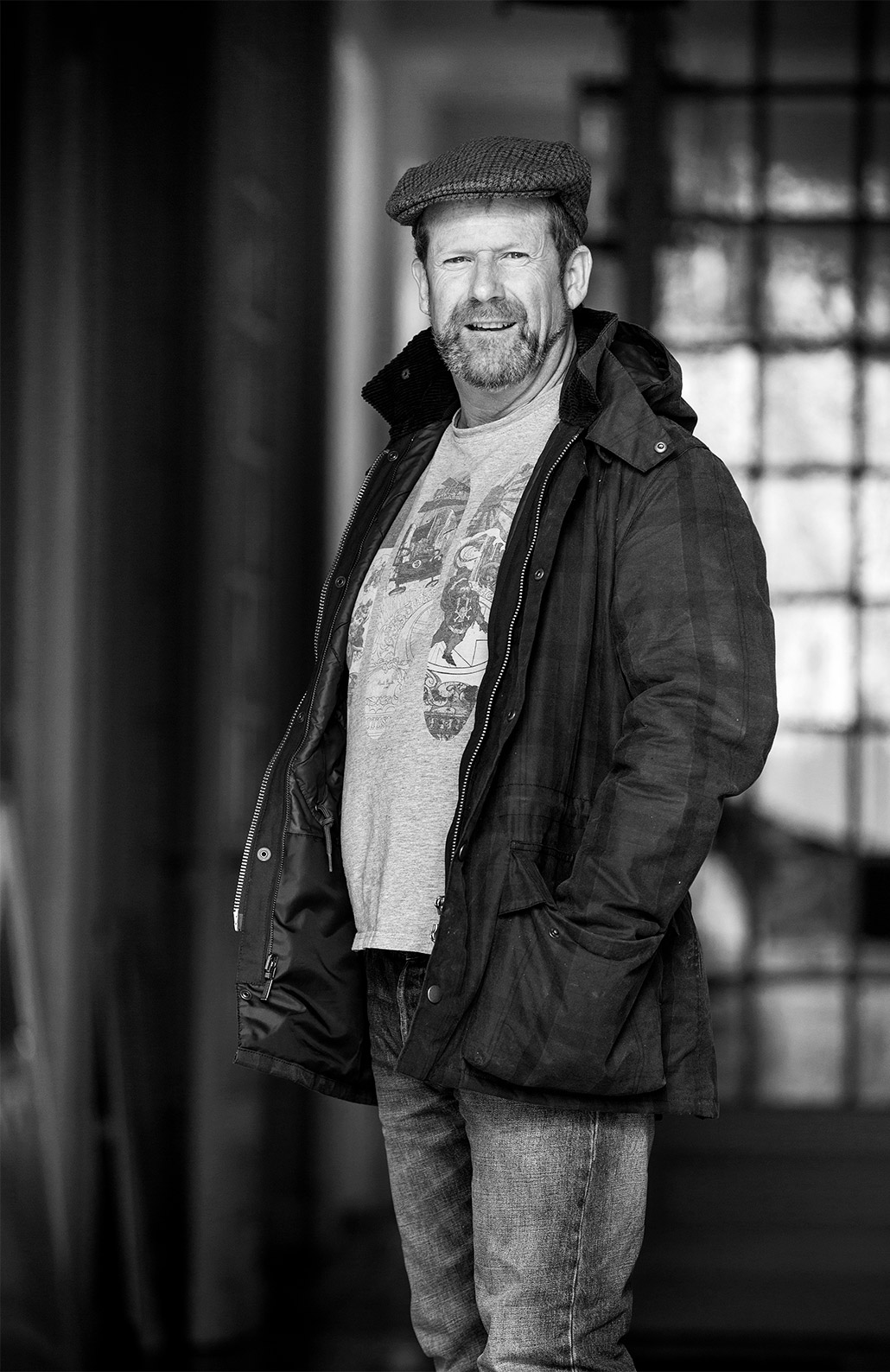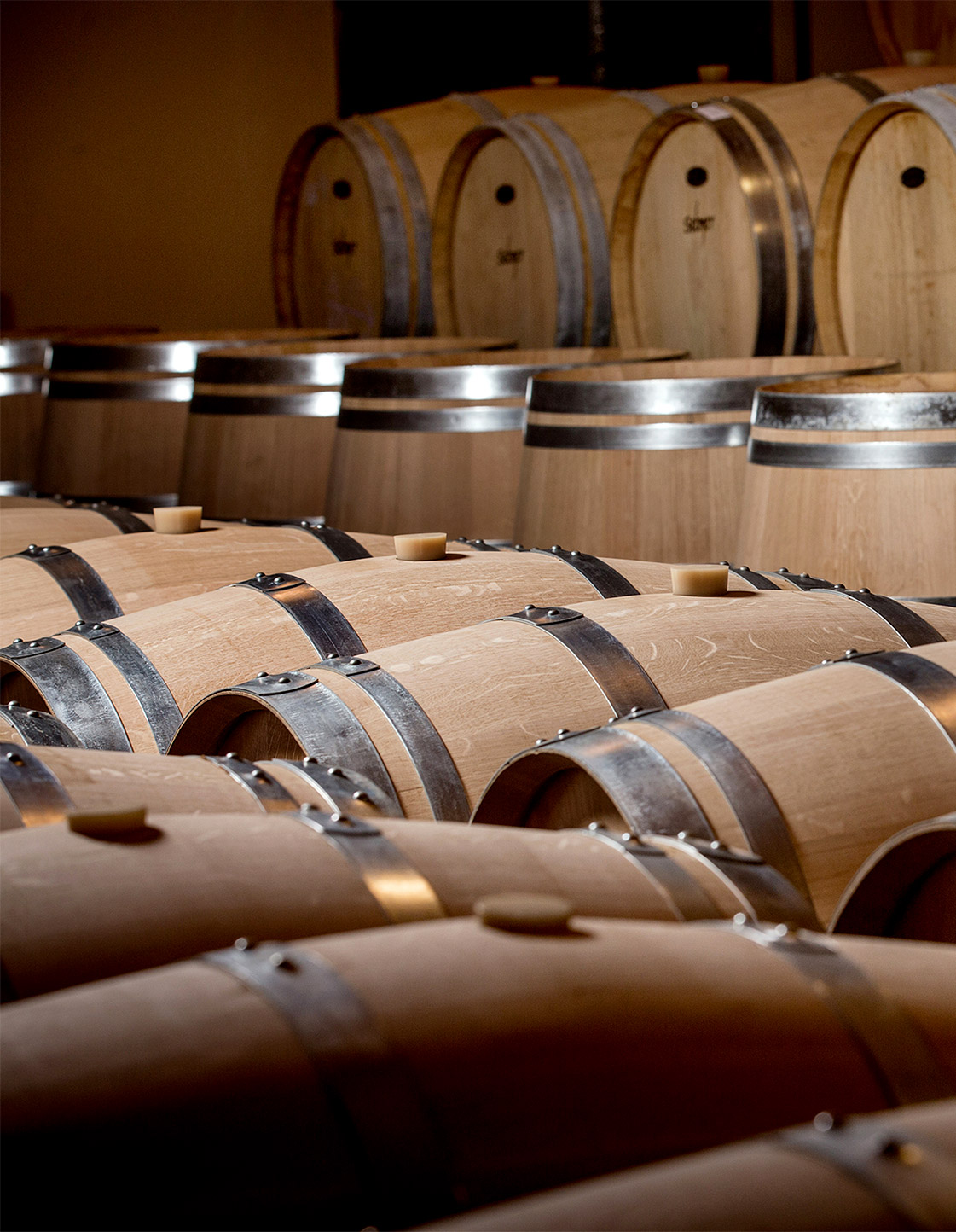


Nestling on its hillside overlooking a gentle meander of the Dordogne, Château Gaby is like a jewel in its setting. Château Gaby is like a perfect picture continuously re-painted in the changing light and morning mists, worthy of the best Impressionists.
Perched at the top of the hill, the lovely 18th century building that used to be Fronsac’s post relay station enjoys a commanding, outstanding view. Its vines unroll their rows from its feet down the slope, embracing every wrinkle and soaking up the sunshine to produce the finest fruit.
Lower down, a few winegrowers’ houses and woody hedges are dotted about forming a beautiful rural scene. And in the distance like a winding thread, a gentle meander of the River Dordogne draws the eye, inviting meditation.

The first vines were planted on Gaby’s hills around 1660. Vines were already cultivated of course on Fronsac land during the Gallo-Roman period, but winegrowing took off significantly in the Middle Ages.
In the beginning, wine sales were mainly directed at England and the local wines were very much liked at the royal court. Today, they are enjoyed all over the world. A long time ago, Château Gaby positioned itself amongst the best Fronsac wines as a result of a quality focus that has remained practically uninterrupted.
The Gaby estate belonged to the De Kermoal family for more than 250 years. After changing hands twice in quick succession, the Curl family took over in 2006. At that time, considerable investment and restoration work was lavished on the estate at all levels.
David and Geneviève Curl developed their ambition to make Château Gaby one of the greatest right bank wines and a leader of its appellation.

In September 2016, rumors were rife in Bordeaux that Tom Sullivan, a Boston businessman had just acquired four estates on the right bank. “I bought Château Gaby, because it was the only property whose name I could pronounce,” grins Tom. Right at the top of the hill the old post relay station overlooks the vines, while lower down lies the village of Fronsac and the peaceful River Dordogne.
Was it this attractive countryside that appealed to the Boston-born buyer with Irish blood in his veins?
"I came to wine late in life, but I find it fascinating. However, I was never interested in American wineries, because the wines they produce are often very tannic and one vintage is pretty much like the next. I wanted to invest in a Bordeaux estate. I had a look in the Medoc, but it was far too expensive. So, then I was shown the brochure for Château Gaby in the Canon-Fronsac appellation area, and Château Moya, a Castillon Côtes de Bordeaux estate. I liked what I tasted from the different tanks and detected a lot of potential for development."
He bought Gaby and Moya first. Then last September, he became the owner of Château du Parc with its 5.5 hectares (13.6 acres), a Saint-Emilion Grand Cru property that belonged to the consultant oenologist, Alain Raynaud. Finally, he purchased Château Auguste with its 32 hectares (79 acres) in Saint-Aubin-de-Branne.
The technical director Damien Landouar, who has been pampering the vines since 1998, is supporting him in this new venture. Damien loves this terroir and oversees the work in the vines and winemaking, carried out by his robust, enthusiastic and creative team.

We were looking for something
authentic and sincere
with real personality.
In 2014, Château Gaby embarked on a process to convert to organic agriculture. Its certification from the 2018 vintage onwards represents a meaningful step in this progression. In fact, at Château Gaby, it has been a priority to take environmental balances into account for many years. In 1997, the vineyard was managed rationally and later organically without any claim for recognition being made.
These were well-pondered choices and a personal commitment taken by the owners and the technical director to take care of the environment and protect customers' and of course estate workers' health.
« We only ever use natural, organic products to treat the vines. We carry out treatment depending on the weather. Most of the work in the vines is by hand. »
Tillage is mainly mechanical, while special attention is paid to protecting good, healthy micro-organic life. A horse plough is used on some plots with the help of an expert partner. Two horses have been acquired, which are currently being trained to plough, which is all part of a more profound respect of the vines and learning the appropriate techniques.
In the winery, the focus is on using the right technology that will pamper the grapes as whole fruit. Dry ice is preferred to using sulphur, which is kept down to a minimum. Protected from oxidation and harmful bacteria, the grapes are left to develop the aromas specific to their variety.

We're constantly on the lookout, we like following leads, we have a real research and development mindset.
Damien landouar